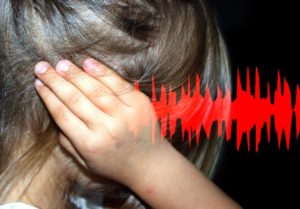
How to Find Your Heart Rate Zones

Get access to everything we publish when you
sign up for Outside+.
So you have your cardio down to a science: You know when, where, how long and how hard you have to work to get that feeling of pure adrenaline — when you know you’re taking your body to that next level of lean. But are you really in the zone?
Although many experts dismiss the notion of a “fat-burning” zone, some studies show that in order to maximize fat loss, you must first reach your “fat burning zone.” That zone is defined as 35 to 69 percent of your maximum heart rate (MHR).
How to Calculate Your Maximum Heart Rate
As soon as you wake up, find your resting heart rate (RHR): Feel your pulse by pressing into your left wrist with your right index and middle fingers. Time yourself for 15 seconds, counting the beats of your pulse; multiply that number by four. This is your resting heart rate. Write it down.
Using your RHR, follow this simple formula to find your MHR and fat burning zone: 220 – age = MHR – RHR x .65 + RHR = 65 percent of MHR.
Here’s the breakdown:
- Subtract your age from 220 to get your MHR
- Subtract your RHR from your MHR and multiply that number by .65
- Add your RHR to this total
- The number you get now is 65 percent of your maximum heart rate
Don’t be intimidated by this — just plug in the numbers that apply to you and do the simple math. In the equation, MHR is your maximum heart rate. For best fat loss results, you’ll want to reach 65 percent of that maximum (which is what the equation above will help you determine).
Exercising above your MHR isn’t recommended, as it could lead to burn-out symptoms over a period of time. Listen to your body. If you feel faint, stop or try the good old-fashioned “talk test” — if you can’t even say a sentence without feeling exasperated, then take it down a notch. Using your MHR as a guide will get you to the fat burning zone you’re after.
“Look for signs such as intense heart palpitations, dizziness, chest pain or severe shortness of breath,” says NASM-certified personal trainer and sports nutritionist Holly Roser. If you feel faint, stop or try the good old-fashioned “talk test” — if you can’t even say a sentence without feeling exasperated, then take it down a notch. Using your MHR as a guide will get you to the fat burning zone you’re after.
There Are Zones Beyond Fat Burning
While you may be most concerned about the fat-burning zone — and for good reason, as this is where most of your training sessions will live — it’s also important to understand the zones above and below this level.
“You should know all your heart rate zones, so you optimize your time training, and see the best results possible,” explains Roser. “It’s important to track your heart rate so you know if you’re pushing yourself hard enough for each workout. Most people don’t push themselves hard enough while training, so it’s important to be able to get yourself uncomfortable!”
The two other zones to know include:
- Low-intensity zone. Think of this zone as a power walk or a light jog. “I call this zone ‘vacation pace,’” says Roser. “It’s pretty comfortable, and you’re not really pushing too hard. This is a good zone if you just started an exercise program and are looking to build your cardiovascular system.” You’ll be at 50-60% of your MHR, and burn less calories overall in this zone.
- Aerobic zone. Best for increasing your V02 submax, burning fat and increasing performance, the aerobic zone is no cake walk — you’re working at 70-80% of your MHR here, so this zone is not sustainable for a long period of time.
“Always have a trainer help you with your fitness program or do some research on your own to set yourself up for success, Roser continues. “It’s hard to push yourself to get into the uncomfortable interval zones, so knowing where you need to push yourself to will help you attack your goals once and for all. Try using heart rate zones as a motivational tool.”
Published at Thu, 21 Oct 2021 03:30:01 -0700






